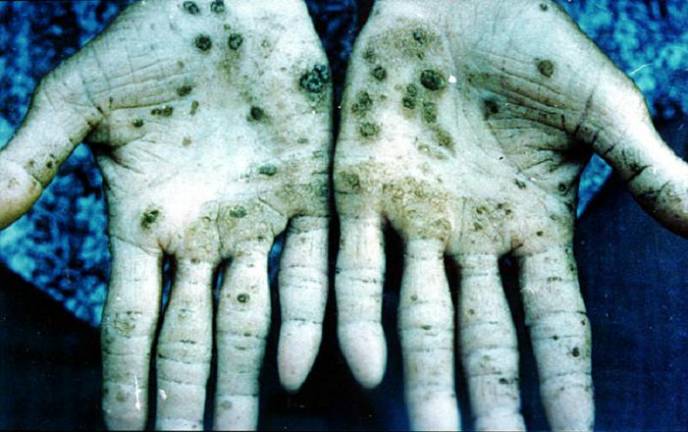The growing problem of arsenic poisoning
There are a lot of elements found on Earth, 118 to be precise. Out of those, many are required by the human body. However, some of them can and will harm your body if exposed to them.
Arsenic is one of them.
Arsenic is a naturally occuring element which belongs to the nitrogen family or pnicogens with an atomic number 33 and having atomic mass 74.92 amu. It can form organic as well as inorganic compounds. The organic form is found be less toxic than the inorganic form.

By James Heilman, MD - Own work, CC BY-SA 3.0, https://commons.wikimedia.org/w/index.php?curid=14772874
Exposure to arsenic in even small amounts can cause many health hazards like cancer in the skin, lungs, bladder and kidney, pigmentation and/or thickening of the skin. It can also increase the risk of cardiovascular diseases, keratoses, neurological problems, and developmental disorders.
What makes it dangerous is its abundance. It is found naturally in the groundwater of a number of countries including including Argentina, Bangladesh, Chile, China, India, Mexico, and the United States.
It is also absorbed by plants and thus end up in our body through the food chain. On top of that, arsenic is used in many industrial processes like the processing of glass, pigments, textiles, paper, metal adhesives, wood preservatives and ammunition. It is also found in pesticides and insecticides which further increase the risk of absorbing arsenic into our body.
Consumption of tobacco also increases the risk of arsenic consumption.
Severity of the problem

Arsenic poisoning Source
According to WHO, around 140 million people in around 50 countries have been drinking water contaminated by arsenic beyond the prescribed limit of 10μg/L.
The problem is very severe in Bangladesh. In 2012 it was found that 39 million people were exposed to arsenic levels of more than 10μg/L and 19 million were exposed to a level of more than 50μg/L of arsenic. These numbers speak for itself as to how many of the people are suffering from arsenic toxicity.
In a highly affected area of Bangladesh, 21.4% of all deaths were due to exposure to arsenic with a level of more than 10μg/L.
This creates a problem as most of the population in 3rd world countries rely on groundwater as a source of drinking water. This water is also used for irrigation purposes and the arsenic present in it is absorbed by the crops.
Suggestions for minimizing exposure
The first thing you should do is to check whether the water in your area contains high levels of arsenic. If it does, you should take the following measures to minimize your consumption of arsenic.
- Use bottled drinking water or alternatively, get a water purifier that can filter arsenic.
- Sweat a lot. Sweating helps in detoxification of the body thus removing arsenic and other harmful elements from your body naturally.
- Instead of using groundwater for drinking, use rainwater or treated surface water. The groundwater can be used for other purposes like cleaning and washing clothes.
- Install arsenic removal systems. Arsenic can be removed by coagulation, precipitation, ion exchange etc.
Thats all. Let me know if you found this article informative and if I'm wrong somewhere, please do correct me.
References:
Images are under CC0 licence unless sourced.
I always like your science posts and in depth analysis.
Thank you!
Many people are too poor or not educated enough to avoid this.
Sadly, yes. It is the developing countries that are hit the hardest by these kind of problems.
You finally found the right platform to showcase your talent .
Lovely posts 👏👏👏
Thanks bro.
thanks for your informative post